The earthquake is unpredictable and it’s a high-energy release geology activity. Earthquake can be extremely deadly if it occur in densely populated areas. A 6.8 magnitude earthquake just hit Morocco on September 8, killing more than 2800 people. That is one of the most devastating earthquakes in Morocco for decades. If you are living in a high-risk earthquake area, you should prepare for the emergency in case an earthquake hits.
The image below shows the earthquakes around the world
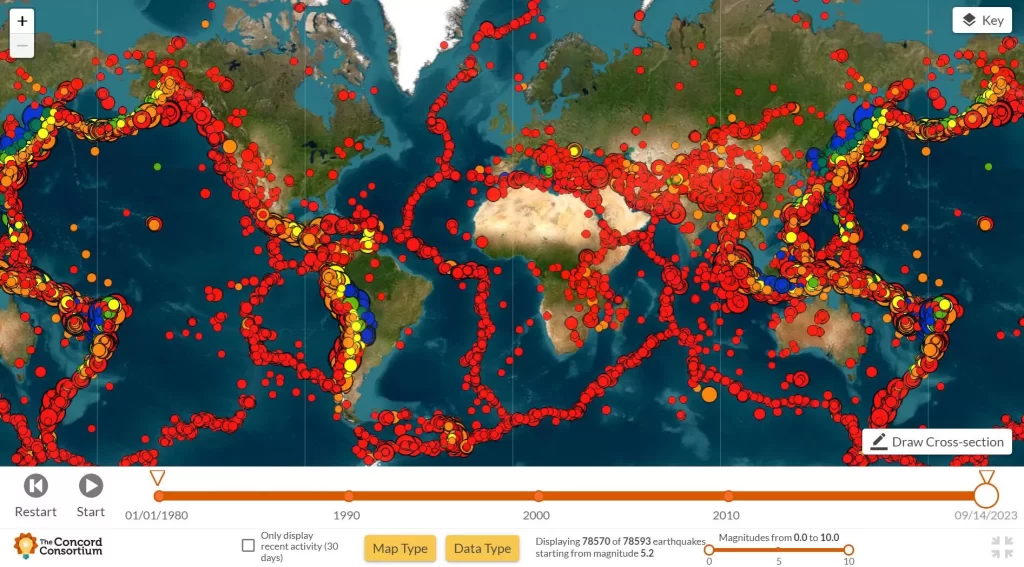
Preparing for an earthquake and increasing your chances of survival involves taking proactive steps to reduce risks and be ready for the event. Here are some points you can refer to prepare for the earthquake attack.
1. Prepare The Emergency Kits
Assemble a disaster supply kit with essential items such as water, non-perishable food, a flashlight, batteries, a first-aid kit, important documents (ID, insurance, passports), medications, and hygiene items. Make sure it’s easily accessible.
Where can you get the emergency kits?
You can purchase emergency earthquake kits from various sources, both online and in physical stores.
Emergency Food Kit
An emergency food kit is a collection of non-perishable food items and supplies designed to sustain individuals or families during emergency situations.
These kits are typically assembled with the goal of providing essential nutrition and sustenance when access to fresh food or clean water is limited or disrupted due to natural disasters, power outages, or other crises.
3 Days Emergency food kit
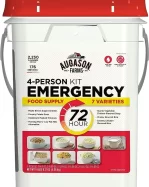
- 176 servings of food carefully selected to nourish 4 people for 72 hours
- Nutritionally balanced with breakfast, entrées, soups, breakfast, and low fat dry powdered milk
- Averages 2,230 calories per day
- 4-gallon watertight pail is easy to transport
- Great for home, cabin, motorhome, office or student dorm room
- Easy to prepare, ready in minutes
8 Days Emergency food kit
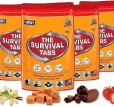
- Contain 100% of 15 Essential Vitamins & Minerals. GLUTEN FREE and NON-GMO.
- The ‘Just in Case’ Food Supply, The Survival Tabs backup for the situations
- This convenient portable, personal pouches will sustain a person for 8 days
- Flavor: Mixed Flavor – Each pouch is 1 flavor – Butterscotch, Vanilla, Strawberry and Chocolate.
- Weight: Approximately 10 ounces per pouch.
30 Days Emergency food kit
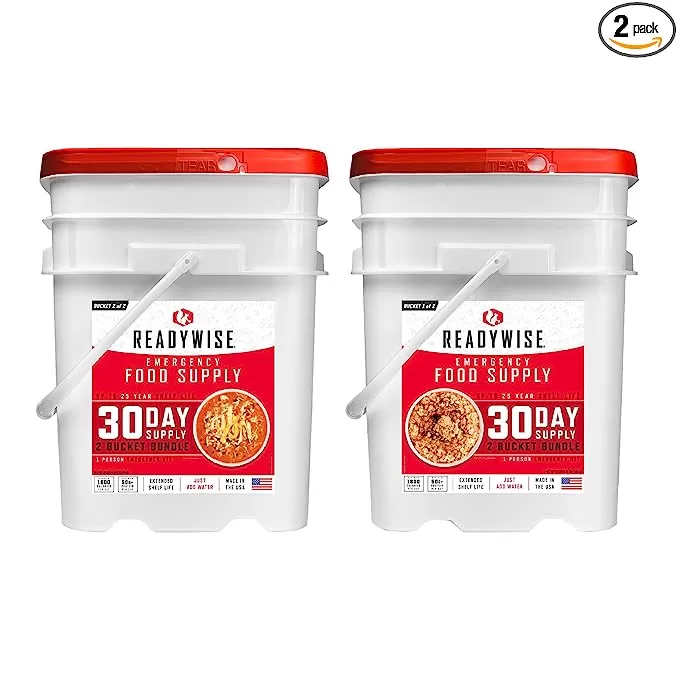
- ReadyWise Emergency Food Kit: Contains two buckets with 298 servings for a 30-day supply.
- Great Taste: Offers breakfast, lunch, and dinner options made from real ingredients.
- Long-Lasting: Food items sealed in durable pouches, lasting 25 years.
- Variety: Includes 10 meal options suitable for emergencies and outdoor adventures.
- Be Ready: Ideal for readiness and outdoor activities.
Emergency Flashlight Kit
An emergency flashlight kit can be a crucial tool after an earthquake, providing illumination in the event of power outages or during rescue and evacuation efforts.
Emergency flashlight kit
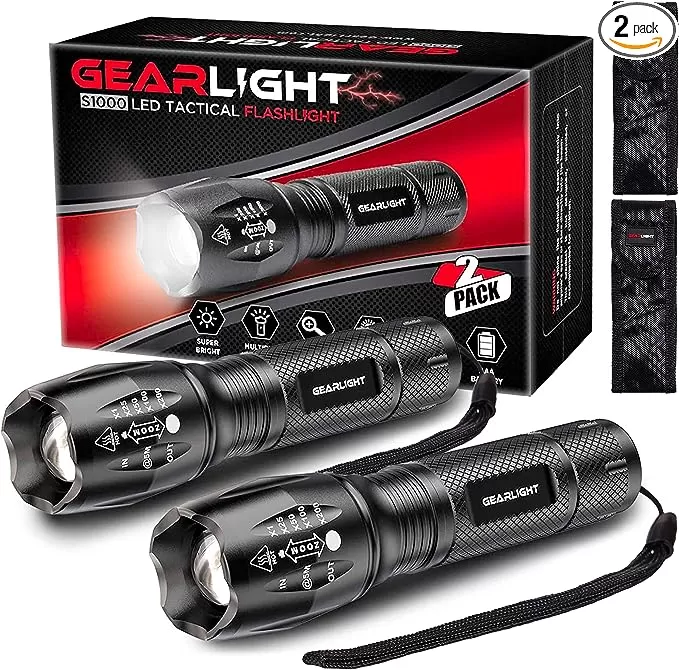
- BRIGHT – The S1000 effortlessly illuminates an entire room
- DURABLE – This tactical flashlight is virtually indestructible.
- COMPACT – This small flashlight easily fits in your pocket, backpack, or purse.
- SIZE – Measuring 6.1 x 1.57 x 1.57 inches
Spotlight Emergency kit
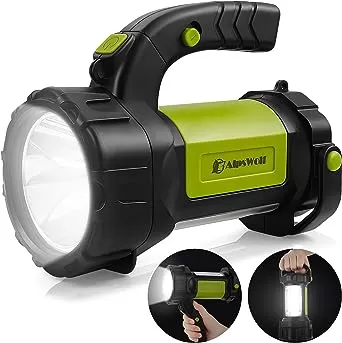
- 4 In 1 Versatile Lantern
- Powerful Brightness and Range
- 3600 Capacity Rechargeable Battery
- Lightweight and Portable, IP65 Waterproof.
- Be Ready: Ideal for readiness and outdoor activities.
Emergency First Aid Kit
An emergency first aid kit is a crucial component of earthquake preparedness. It should be well-equipped to handle a range of injuries and medical needs that may arise during or after an earthquake.
330 Pieces First Aid kit
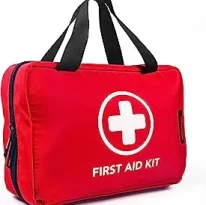
- Fully packed with 330 professional medical supplies – all kinds of bandages, CPR face shield, gloves, iodine prep pads, instant cold pack, tourniquet, etc. Meets international medical standards
- WATERPROOF & DURABLE BAG
- SMART AREA CLASSIFICATION DESIGN
- COMPACT & LIGHTWEIGHT
250 Pieces First Aid kit
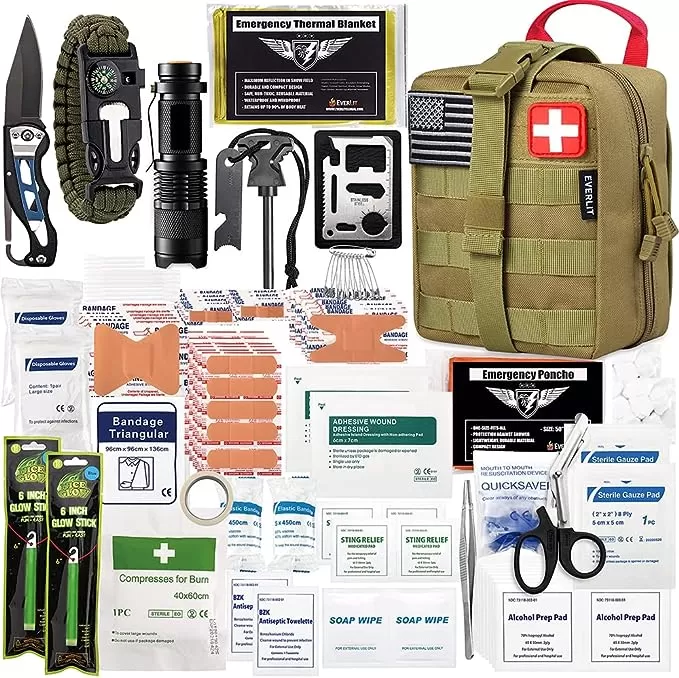
- 250 PCS First Aid Survival Kit, Meaningful and Cool Gifts Ideas for Families
- The product includes more than enough med supplies to treat a single family under emergency circumstances.
- Molle EMT Pouch, Durable, Portable, and Water-Resistant
- All Weather, All Age, Multi-Purpose Survival Kit
2. Develop a Family Emergency Plan
Establish a family emergency plan that includes communication methods, designated meeting places, and emergency contacts. Ensure every family member knows the plan.
3. Secure Your Home
Identify and fix potential hazards, like unsecured heavy furniture, appliances, or hanging objects. Use earthquake straps to secure large items like water heaters and bookshelves.
Install latches on cabinets to prevent items from falling during shaking.
4. Practice Earthquake precaution training
Conduct regular earthquake precaution training with your family or household members. Teach everyone to “Drop, Cover, and Hold On” during an earthquake.
5. Secure Gas and Water Lines
Consult professionals to secure gas and water lines to reduce the risk of fire or gas leaks during an earthquake.
6. Reinforce Your Home
If you live in a high-risk earthquake area, consider reinforcing your home to make it more earthquake-resistant. This may involve strengthening the foundation and structure.
7. Stay Informed
Be aware of earthquake risks in your area and stay informed about local emergency plans and procedures. Listen to local authorities and the National Weather Service for updates and alerts.
8. Create a Grab-and-Go Bag
Prepare a small, portable emergency bag with essential items like water, snacks, a flashlight, a multi-tool, a first-aid kit, and copies of important documents. Keep it by your bedside.
9. Secure Heavy Items:
Anchor heavy objects like bookshelves, cabinets, and appliances to the wall. Use earthquake-resistant brackets and straps.
10. Familiarize Yourself with Your Environment
Know your escape routes from different areas of your home and workplace. Be aware of potential hazards, such as glass windows and objects that can fall.
11. Stay Calm During an Earthquake
When an earthquake strikes, “Drop, Cover, and Hold On.” Get on the ground, take cover under a sturdy piece of furniture (if available), and hold on until the shaking stops.
12. After the Shaking Stops
Check yourself and others for injuries. Administer first aid if needed. Be prepared for aftershocks. – Inspect your surroundings for hazards like gas leaks, fires, or structural damage. Evacuate your home if necessary.



